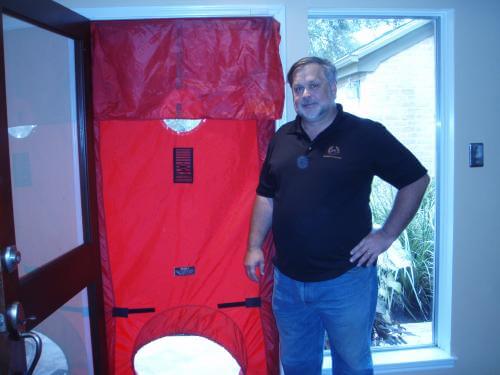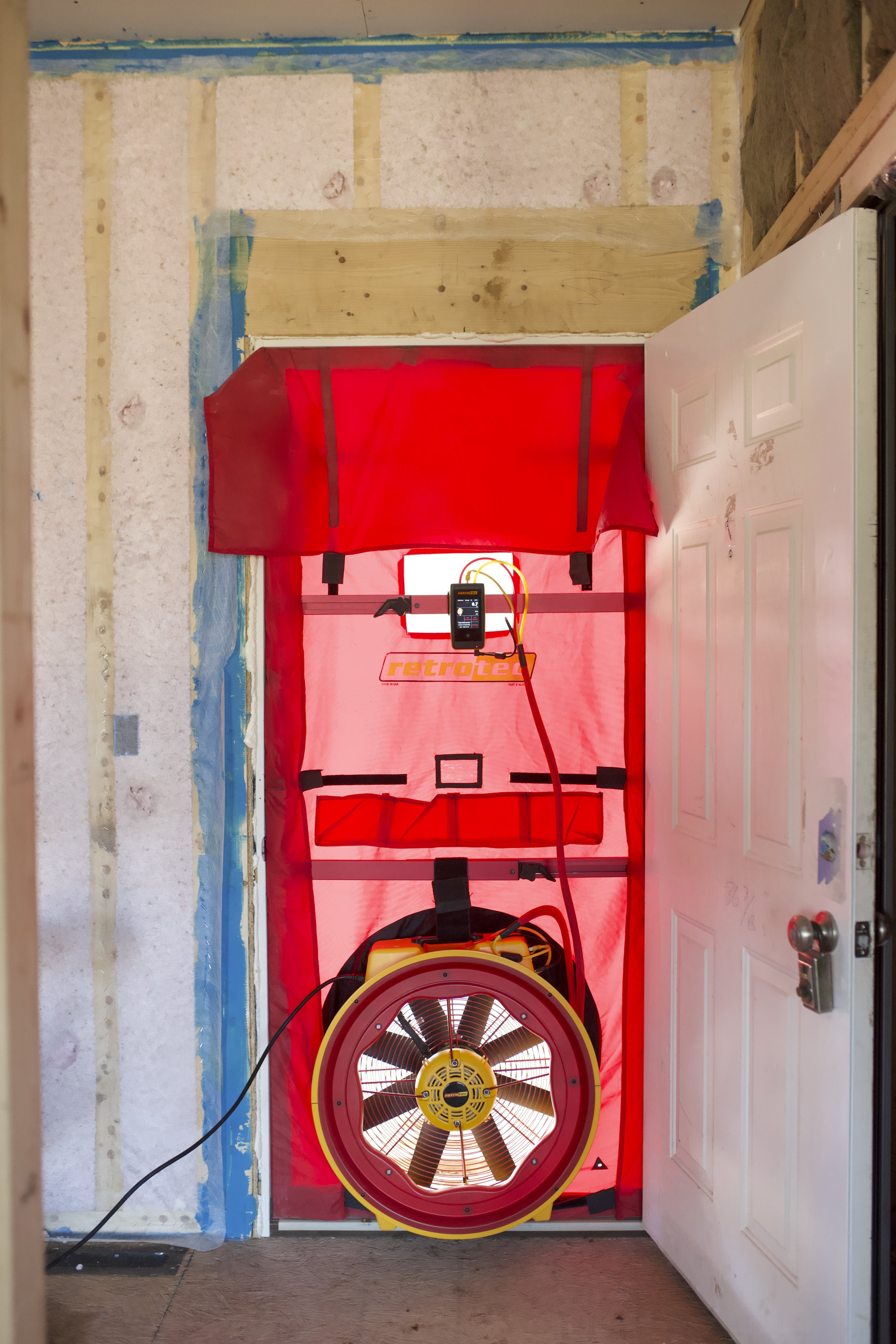Just How Energy Testing Can Lead to Extra Sustainable Living Solutions
Energy screening is a necessary tool for advertising sustainable living. It discovers ineffectiveness in power use within homes. Methods such as power audits and thermal imaging give important insights. House owners can recognize areas requiring improvement, from insulation to home appliances. Resolving these inefficiencies can lead to substantial power cost savings. Yet, many stay unaware of the full possibility of these methods. What steps can people require to enhance their homes and add to a more lasting future?
Understanding Energy Screening and Its Importance

Usual Techniques of Power Screening
There are several typical approaches of energy testing that home owners can utilize to examine their energy performance (air tight solutions). One extensively utilized technique is the blower door test, which gauges the air leakage in a home. By pressurizing the building, it recognizes drafty locations that may call for securing. An additional technique is thermal imaging, where infrared electronic cameras find temperature level variations in ceilings, windows, and wall surfaces, highlighting insulation issues.Energy audits are likewise prominent, involving a thorough evaluation of a home's energy use, usually conducted by a professional. These audits might include examining home heating and cooling systems, appliances, and total energy usage patterns. Furthermore, wise energy meters can offer real-time data on energy use, helping house owners comprehend their consumption practices. Together, these approaches supply important understandings, allowing property owners to make informed choices regarding improving their power efficiency and advertising lasting living practices
Identifying Power Inefficiencies in Your Home
Recognizing power ineffectiveness in a home is necessary for home owners intending to reduce power intake and reduced utility bills. Usual areas to assess consist of insulation, windows, and devices. Poor insulation can result in significant warmth loss in wintertime and unwanted heat gain in summertime, making heating and air conditioning systems work harder. Breezy home windows add in a similar way, permitting conditioned air to get away and increasing power demand.Additionally, out-of-date appliances frequently take in more energy than their modern counterparts, further exacerbating ineffectiveness. House owners need to likewise think about the lights system, as incandescent bulbs use more energy compared to LED options.Regular maintenance of HVAC systems is important, as forget can lead to minimized efficiency. By systematically reviewing these facets of a home, home owners can identify areas needing improvement. Dealing with these inadequacies not just improves convenience yet additionally adds to a more sustainable way of life by lessening power waste.
The Function of Power Audits in Sustainability
Power audits play a necessary function in advertising sustainability by offering home owners with a substantial assessment of their power usage. These examinations recognize locations where power is wasted, permitting individuals to understand their consumption patterns and make informed choices for enhancement. By exposing inefficiencies in home heating, cooling, insulation, and home appliances, power audits act as a critical tool for reducing general energy demand.Furthermore, they help with the implementation of energy-saving actions, such as updating insulation or mounting energy-efficient lighting, which can substantially lower energy bills and reduce carbon footprints. The insights obtained from an energy audit encourage property owners to prioritize sustainability in their living environments. As even more homes take part in this process, the collective influence adds to wider ecological objectives, cultivating a culture of power awareness and duty. Inevitably, power audits are foundational to progressing lasting living options, profiting both private home owners and the setting at huge.
Ingenious Technologies for Energy Efficiency
As homeowners increasingly look for to enhance their power efficiency, cutting-edge technologies are arising to sustain these undertakings. Smart home systems, furnished with sensors and automation, enable house owners to control and keep an eye on energy usage in real-time. These systems can readjust heating, cooling, and lights based upon tenancy, thus lowering waste.In enhancement, developments in energy-efficient devices have made considerable strides. Instruments such as ENERGY STAR-rated fridges and washing makers take in much less energy while providing suitable performance. The assimilation of renewable energy resources, like solar panels and wind generators, allows home owners to produce their own power, reducing dependence on nonrenewable resources.Building materials have also evolved, with options like shielded concrete forms and energy-efficient home windows adding to minimized power loss. Together, these ingenious modern technologies not just improve energy performance yet additionally promote an even more this page sustainable living atmosphere, equipping house owners to make impactful options in their energy consumption techniques.
Long-Term Benefits of Lasting Living
While lots of might check out sustainable living as a trend, its lasting advantages prolong far past simple way of life selections. Welcoming sustainable practices results in significant decreases in carbon impacts, contributing to a healthier world. By minimizing resource usage and focusing on renewable resource, people and neighborhoods can experience lower energy costs. This economic relief can boost economic security over time, enabling for reinvestment in various other crucial areas.Furthermore, sustainable living cultivates stronger neighborhood ties as people team up on regional campaigns, promoting social communication. Wellness benefits additionally emerge, as minimized pollution and raised eco-friendly rooms enhance air quality and total well-being. In addition, future generations will certainly acquire a more lasting atmosphere, guaranteeing the availability of natural deposits and biodiversity. Inevitably, the long-term benefits of sustainable living incorporate environmental, economic, and social measurements, offering a compelling situation for people to embrace and preserve these techniques for the greater good.
Steps to Execute Energy-Saving Solutions
Executing energy-saving services begins with a comprehensive assessment of energy intake patterns to recognize areas for enhancement. When these patterns are comprehended, people can identify energy-efficient upgrades that line up with their requirements. Constant surveillance and adjustments to energy usage guarantee that these solutions remain effective over time.
Assess Energy Intake Patterns

Assessing energy intake patterns is a vital action toward identifying efficient energy-saving remedies. By systematically tracking usage throughout various times and appliances, individuals and organizations can pinpoint areas of excessive usage. This evaluation can expose peak usage periods, making it possible for a far better understanding of when power needs are highest. Furthermore, taking a look at patterns permits for contrasts between comparable appliances, highlighting those that run much less successfully. Information collection methods, such as smart meters and power audits, provide valuable insights right into total power usage. In addition, identifying trends over time can assist in recognizing seasonal variants and changes in intake behaviors. This fundamental understanding is crucial for creating targeted approaches that promote sustainable living and minimize total power expense.
Determine Energy-saving Upgrades
To effectively carry out energy-saving services, identifying energy-efficient upgrades is essential for both organizations and home owners. This procedure starts with a detailed analysis of existing systems, including a/c systems, insulation, and appliances. Upgrades might incorporate setting up power STAR-rated home appliances, enhancing insulation, and making use of energy-efficient windows. Furthermore, implementing clever thermostats can enhance home heating and cooling down schedules, decreasing power intake. Moving to LED lights is one more reliable step, as it eats significantly much less energy than typical bulbs. Discovering renewable energy alternatives, such as solar panels, can provide long-lasting financial savings. Ultimately, prioritizing these upgrades not just adds to minimized power costs however additionally fosters a commitment to sustainability, profiting both the environment and future generations.
Monitor and Change Use
Surveillance and adjusting energy use is critical for making the most of the advantages of energy-saving solutions. Consistently evaluating energy usage patterns permits people and businesses to recognize areas for renovation. By making use of smart meters and energy management systems, users can track real-time usage and spot any type of abnormalities that might indicate inefficiencies.Adjusting actions, such as shutting off lights and unplugging extra tools, better improves power savings. Additionally, scheduling devices to operate during off-peak hours can significantly decrease costs.Conducting regular power audits warranties that applied solutions stay effective with time. By actively taking part in surveillance and changing methods, individuals can optimize their energy efficiency, contribute to sustainability initiatives, and inevitably lower their environmental Clicking Here footprint.
Frequently Asked Inquiries
Exactly how Much Does an Energy Audit Generally Cost?

Can Energy Testing Help In Reducing Utility Expenses?
Energy testing can significantly decrease utility costs by determining inefficiencies in a home's energy use. By addressing these problems, home owners typically experience lower intake and prices, resulting in more cost-effective power management and boosted monetary savings.
What Qualifications Should a Power Auditor Have?
A power auditor ought to have pertinent certifications, such as RESNET or BPI, along with experience in building scientific his explanation researches. energy testing. Solid logical abilities and expertise of energy effectiveness techniques are crucial for carrying out accurate assessments and providing effective referrals
Are There Government Rewards for Energy Performance Upgrades?
Government rewards for power effectiveness upgrades commonly exist, including tax rebates, gives, and credit scores. These programs aim to urge organizations and house owners to buy energy-saving technologies, ultimately promoting environmental sustainability and minimizing overall power usage.
Exactly how Frequently Should I Conduct Energy Screening in My Home?
Power testing need to preferably be performed each year to recognize inefficiencies. However, homeowners may consider a lot more frequent analyses after significant restorations, adjustments in energy bills, or if uncommon drafts or temperature level variants are discovered within the home. Energy testing allows the evaluation of how well a home uses energy, identifying locations where waste happens. Recognizing power inefficiencies in a home is crucial for homeowners aiming to decrease energy usage and lower utility expenses. Energy audits play a necessary function in advertising sustainability by giving home owners with a considerable analysis of their energy use. By disclosing inefficiencies in heating, air conditioning, insulation, and home appliances, power audits serve as an essential tool for minimizing general power demand.Furthermore, they facilitate the implementation of energy-saving procedures, such as updating insulation or setting up energy-efficient illumination, which can significantly lower energy costs and minimize carbon footprints. Energy screening can noticeably decrease energy costs by identifying inefficiencies in a home's power use.